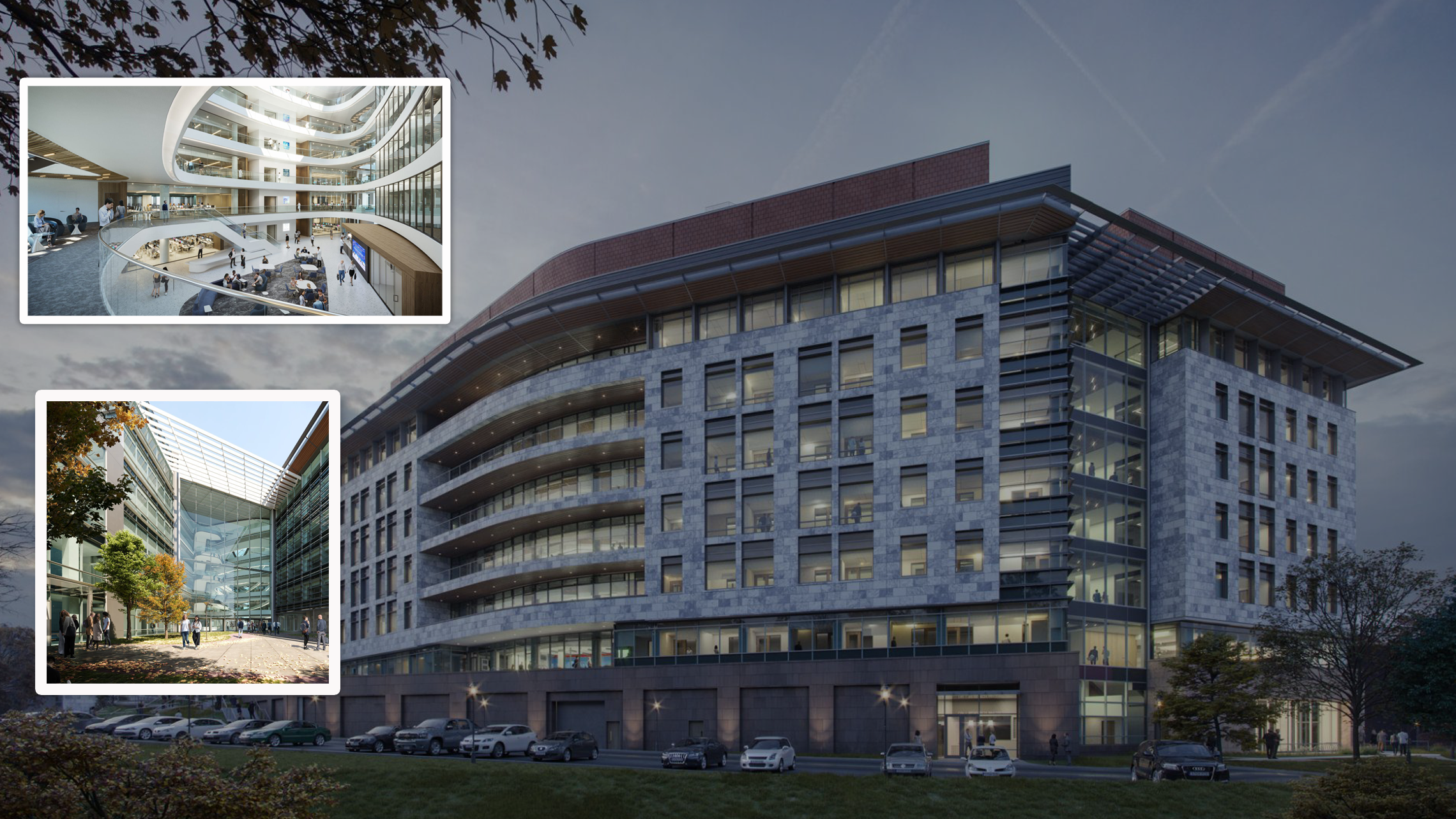
HSRB-II
Information and latest news on the opening of Emory University's newest, state-of-the-art research facility, Health Sciences Research Building, Phase II.
"HSRB-II is a trailblazing space designed to incite better collaborations and bigger impacts in biomedical research. Multidisciplinary to its core, it brings together experimental researchers, computationists, and core technologies to solve the biggest human health problems of our time."
HSRB-II Frequently Asked Questions
Updated 11/18/2025
New users must be approved on an IACUC protocol and have completed both DAR didactic facility orientation and then on-site orientation with the facility manager or designee. Step-by-step details on gaining access are provided at the Facility Access tab at the DAR web site.
Kitaw Shiferaw.
Dr. Lindsey Ferguson
As programmed, the facility was designed to house 4,400 mouse cages, substantial numbers of zebra fish, a smattering of other species at small scale, and ABSL3 animal models. Accommodating a plethora of emergent needs has winnowed the mouse capacity and affected the number of rat housing rooms available. The accommodation of other species and new investigative groups will be managed on a case-by-case basis and should be presented to the facility manager and Dr. Mook.
Yes. Most significantly the source of lighting will be warm LED and not cool white fluorescent lighting that has been the standard in other DAR facilities.
Yes. The DAR will provide one or more surgery suites available for use by qualified surgeons by reservation
Yes. Dr. Santangelo will have an IVIS in the facility and has agreed to share it
No. The closest x-ray irradiator is in the DAR Peds/ECC facility room G16B
The facility was not designed for ABSL2 studies but was designed with flexibility to offer temporary ABSL2 biocontainment. As of November 2025, DAR has assessed the scale and tempo of research requiring ABSL2 models, and has identified alternatives to support ABSL2 studies for HSRB II-based laboratories. These alternatives include the following:
- ABSL2 guinea pigs in WBRB G39G (i.e., not in HSRB II)
- ABSL2 mice in Pediatrics G31 suite (i.e., not in HSRB II)
- ABSL2 hamsters in Pediatrics G31 suite (i.e., not in HSRB II)
- ABSL2 rats: To be determined
The ABSL3/BSL3 suite will not be operational until approved by EHSO and BSL3 director Dr. Rafael Medina.
Details can be provided by Dr. Mook (dmook@emory.edu). In general, a successful case would use > 20 linear feet of countertop work space, support a substantial grant portfolio, and operate 5 days a week for greater than 4-6 hours per day.
A safe can be reserved by contacting Dr. Mook (dmook@emory.edu) who will confirm the request with an "Intent to Issue a Safe" email.